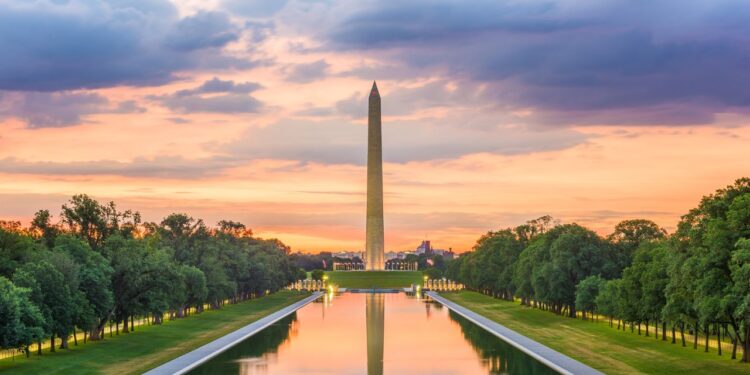Nearly a quarter of all office spaces in D.C. are currently unoccupied — marking a new record high, according to recent data by real estate firms CBRE Group and JLL. Like many large metro areas across the U.S., Washington, D.C. continues to face abnormally high office vacancy rates as a direct consequence of remote and hybrid work trends this year.
The troubling trend is more pronounced in areas like K Street, a business corridor known for providing offices to notable government workers, law firms, consulting firms, non-profits and lobbyists.
The COVID-19 pandemic accelerated the acceptance of flexible work policies across the U.S. and triggered a notable rise in remote work environments. This, coupled with several economic factors such as inflation, influenced many companies to reassess their office space needs and reduce their physical footprint. The combination of factors has resulted in a nationwide overall decline in attendance at traditional commercial offices persisting into 2024.
Key card data published by security firm Kastle reveals that less than half of Washington, D.C., office workers are presently working on-site compared to pre-pandemic levels. Analyzing 10 major U.S. metro areas, including New York, Los Angeles, Dallas, and Chicago, Kastle reveals an average occupancy rate of around 50.2%, as of July 31.
D.C. Mayor Muriel Bowser acknowledges the pressing trend to the city’s economy. Last year, the city launched the Office-to-Anything Program, which encourages office conversions into commercial, entertainment, and retail spaces. However, the city also promotes commercial-to-residential conversions via a 20-year tax abatement.
Similar conversion strategies have been introduced in several large metro-areas across the U.S. In Chicago, the city hopes to fill empty office spaces by granting $150 million in subsidies to real estate developers converting outdated buildings into hotels in apartments.
The future of work is leading cities to enact strategies to alleviate some of the negative impacts flexible work trends are causing. This will lay the groundwork for designing and planning 15-minute cities rather than relying on commercial office space as the main driver for foot traffic to brick-and-mortar businesses.
Not all large companies are moving away from traditional office spaces, companies like Kohl’s have recently issued RTO mandates to up the number of days employees work from the corporate office. The Washington Examiner reports that Fannie Mae has reversed its decision to vacate its large Midtown Center location, in Washington, D.C. The mix of responses highlights the complex RTO debate and the changing preferences of the workforce in the post-pandemic world.


 Dr. Gleb Tsipursky – The Office Whisperer
Dr. Gleb Tsipursky – The Office Whisperer Nirit Cohen – WorkFutures
Nirit Cohen – WorkFutures Angela Howard – Culture Expert
Angela Howard – Culture Expert Drew Jones – Design & Innovation
Drew Jones – Design & Innovation Jonathan Price – CRE & Flex Expert
Jonathan Price – CRE & Flex Expert











